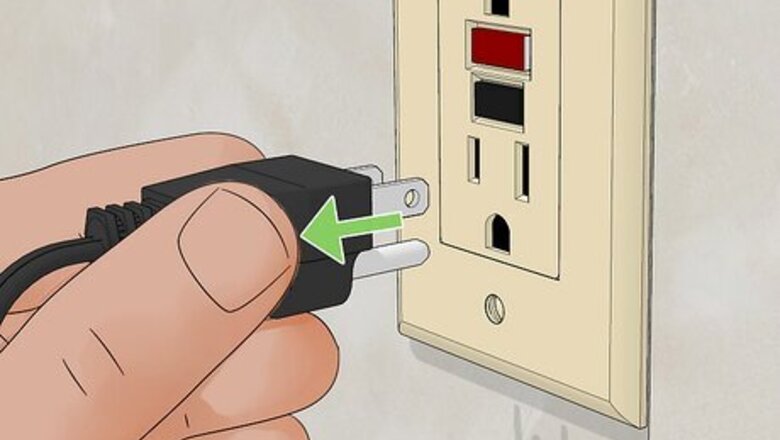
views
Removing the Old Seal

Unplug the washing machine. Unplug the washing machine, so there is no possibility of injury from accidentally turning it on.
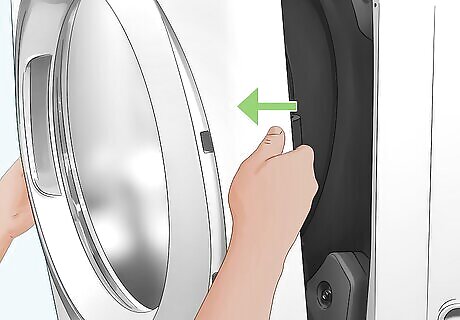
Unscrew the front panel if possible. This is not possible on all washing machine models, and can be an involved process on others. Look up your model online with the query "remove front panel" to save yourself the frustration of figuring it out for yourself, or look for screws in the following places, continuing down the list if the front panel still won't come off with a good tug: The front panel itself, or the sides and base of the machine near the front panel. Remove the detergent dispenser and look for a screw behind it. Detach the kick panel (below the large front panel) and any other smaller panels on the front. Some kick panels can only be detached after pulling open the filter with a flat-head screwdriver, then detaching the drain hose. Unscrew the lid and look for screws beneath it attaching the front panel.
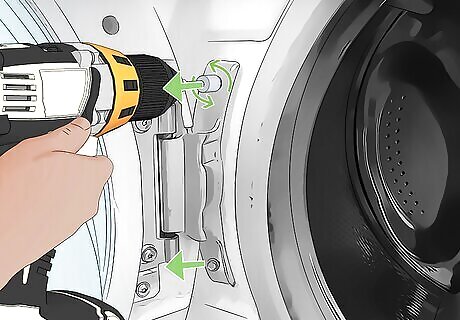
Handle a machine without a removable front panel. If the front panel is not removable on your model, you'll have to do the job through the front opening. There are a few things you can do that give you more room to work: Unscrewing and removing the lid. Unscrew the door hinge, if possible. Setting the machine carefully on its back, so the drum drops slightly down, away from the door.
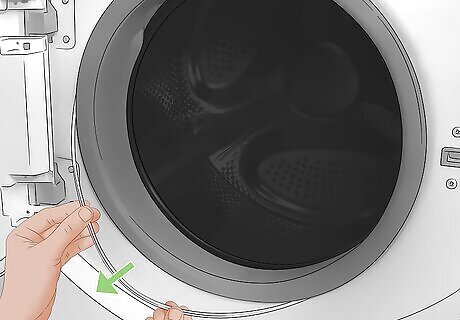
Remove the outer retaining band. Most washing machines have a small band flush against the outer edge of the rubber door seal. Pry this away with a flat-head screwdriver, then pull it entirely off the seal.
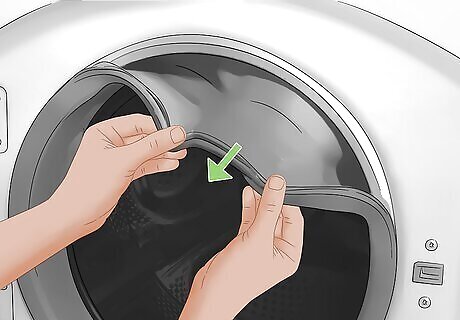
Fold the door seal into the washing machine. Pry the rubber door seal off the edge of the drum using your fingers or a flat-head screwdriver. Fold it off the edge and into the drum to access the inner retaining band underneath it. If you feel any resistance, stop and locate any clips holding the clamp in place. Clips can usually be removed with a screwdriver, either by removing the screws holding them in place, or by prying them off with a flat-head.

Remove the retaining spring or band. This part presses the rubber seal in place. Locate the screw or nut holding the spring in place, and loosen it so the seal can be unhooked and removed. You may need to use one of the following techniques to access the screw: Unscrew the lid of the washing machine and come in from the top. Remove the front panel of the washing machine, then unbolt the large, round counterweight surrounding the drum. In rare cases, the clamp band has no tension adjustment, and can be pushed off using a flat-head screwdriver or fingers. Start from the bottom and work your way around the drum in both directions.
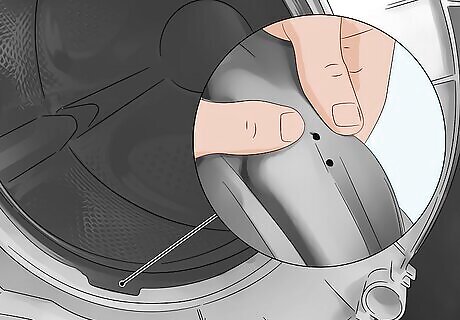
Note the position of the drain holes. Look for small drain holes near the bottom of the seal. Your new door seal should have the drain holes in a similar position to allow water to drain correctly.

Pull off the seal. Pull the seal away from the lips of the drum to remove it. Some door seals are glued in place, but these can still be removed with a strong tug. On some models, the door lock also has to be unscrewed before the seal can be pulled off. Take note of the door lock position before you remove it, since you'll have to orient it in the same position after installing the new seal.
Putting in the New Seal
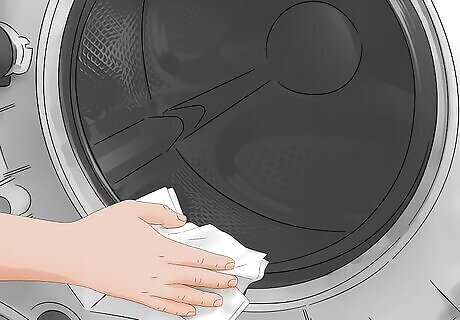
Wipe the exposed area with a damp cloth. Before you put in the new seal, remove all grime and mold from the attachment area using a damp cloth.
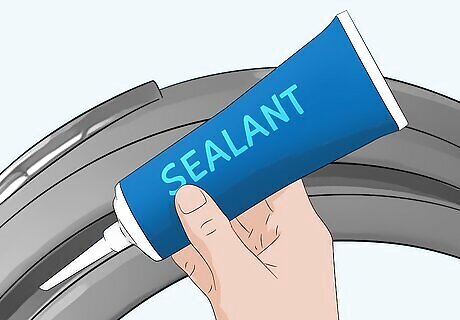
Decide whether to use lubricate or sealant . Unless your seal came "pre-lubricated," you can rub the lip with a little dishwashing liquid to make it easier to fit on. If the seal is not lubricated, you have the option of attaching it more firmly using a specialized adhesive for rubber door seals. This is usually not necessary, unless the seal needs to be glued to a drain hose.

Align the new door seal over the drum. Fit the door seal on, working the inner lip over the drum. Make sure to line the seal up so the drain holes are at the bottom, near where the previous seal's drain holes were. There will often be a mark, such as a triangle, on both the door seal and the machine. Line these up when attaching the seal.
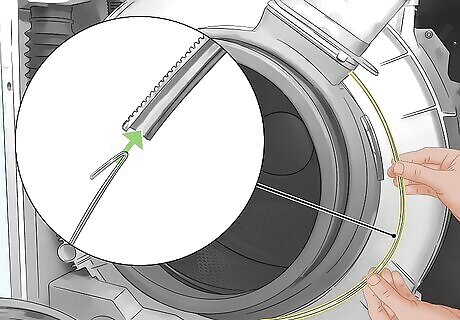
Fit the inner spring or band back on. Fold the new door seal in to the drum again. Hook the spring or band back together, then pull it on over the seal. Tighten it again using a screwdriver or wrench.
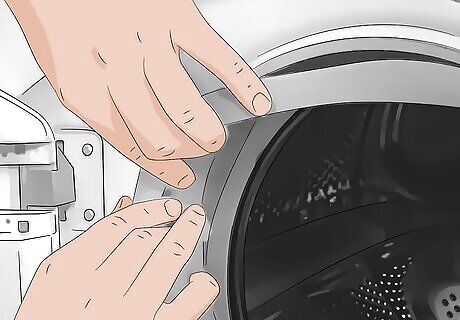
Fit the outer lip and band over the outer rim. If you have removed the counterweight or front panel, replace them first. Next, pull out the door seal again and hook the outer lip over the outer groove. If there was an outer retaining band, fit this over the outer lip and press tightly to reattach it.

Reattach all other parts. Screw back on the front panel, door, lid, or any other parts you had to remove to get at the door seal. Plug in the washing machine. Consider running the washing machine on empty while supervised, to check for leaks. If the door leaks, you'll need to disassemble it and check that all parts are firmly attached.

















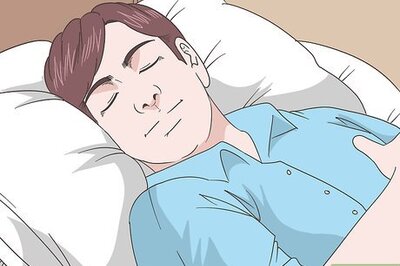
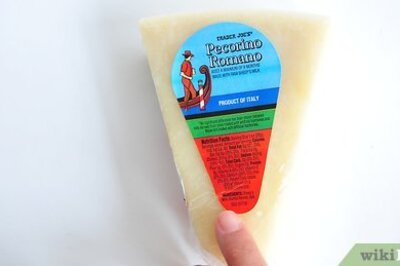
Comments
0 comment